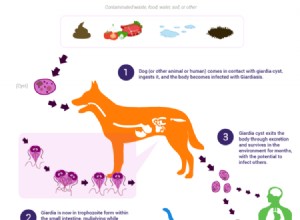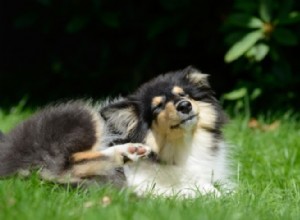
 Криптоспоридиоз у собак:симптомы, признаки, лечение и профилактика
Криптоспоридиоз у собак:симптомы, признаки, лечение и профилактика
 Пика у кошек:причины, симптомы и лечение
Пика у кошек:причины, симптомы и лечение
 Травмы глаз у собак:причины и лечение
Травмы глаз у собак:причины и лечение
 Панкреатит у собак:причины, симптомы и профилактика
Панкреатит у собак:причины, симптомы и профилактика
 Дисплазия тазобедренного сустава у собак:профилактика, причины, симптомы и лечение
Дисплазия тазобедренного сустава у собак:профилактика, причины, симптомы и лечение
 Опухоль селезенки у собак:признаки, причины, лечение
Опухоль селезенки у собак:признаки, причины, лечение
 ВИК у кошек:причины, лечение и профилактика
ВИК у кошек:причины, лечение и профилактика
Ваша собака ест грязь, камни или что-то, что ей не положено? Может быть, им нравится баловаться мусором, травой или даже какашками? Когда дело доходит до еды, у наших собачьих компаньонов могут быть несколько странные, даже отвратительные привычки, и они с радостью проглатывают предметы, которые кажутся несъедобными. Если ваша собака одна из них, у нее может быть состояние, называемое пикацизмом.
Но что такое пикацизм? Стоит ли беспокоиться, если у вашей собаки пикацизм, и есть ли способы помешать ей есть то, что ей делать не следует?
Читайте дальше, чтобы узнать больше о пикацизме у собак, включая причины, симптомы, варианты лечения и многое другое.
Оглавление
Совет профессионала: Вы никогда не сможете исключить риск проглатывания инородного тела, но, застраховав домашнее животное до того, как возникнет проблема, вы можете защитить себя и свою собаку, если произойдет невообразимое.
Пикацизм — это расстройство пищевого поведения, характеризующееся желанием есть объекты, не являющиеся едой. Некоторые щенки могут есть только один тип предметов, в то время как другие будут есть множество разных предметов, таких как грязь, камни, книги, шарики, влажные салфетки и многое другое. Как правило, собаки с пикацизмом склонны отдавать предпочтение предметам, которые несут запах их владельца, таким как нижнее белье, носки, полотенца и колготки.
Пикацизм может быть опасен для здоровья вашей собаки, потому что предметы, которые она проглатывает, могут быть токсичными или застрять в горле и кишечнике.
Пикацизм отличается от копрофагии или заглатывания фекалий. Эта привычка чаще встречается у кормящих собак, которые склонны есть экскременты своих щенков, но часто передается и взрослым собакам, и от нее особенно трудно избавиться.
Некоторые породы собак более склонны к пикацизму например, лабрадоры-ретриверы. Заболевание также чаще встречается у сук. .
Причина расстройства пикацизма может быть физиологической. (из-за основного заболевания) или психологического (чисто поведенческие).
Наиболее распространенные заболевания, вызывающие пикацизм у собак, включают:
Пикацизм также может быть результатом анемии, заболеваний печени, воспалительных заболеваний кишечника, опухолей желудка, неврологических проблем и прорезывания зубов (у щенков). В некоторых случаях пикацизм может быть побочным эффектом лекарств, таких как противосудорожные препараты и стероиды.
Behavioral pica, also called stress eating, is most often caused by boredom, anxiety (especially separation anxiety), and stress. Other common reasons include depression, lack of physical or mental stimulation, and attention-seeking.

The classic sign of pica in dogs is eating non-food objects. However, there’s a number of secondary symptoms that may be caused by the disorder, which can vary depending on the item consumed.
Ingestion of a foreign object can lead to gastrointestinal (GI) irritation with symptoms such as:
More serious health complications include a blockage of the intestines and internal ulcerations , which symtpoms can include:
If the object is blocking the respiratory tract, your pet might cough or sneeze frequently. In severe cases, pica can result in infection — especially if the ingested items are dirty or contaminated (such as feces) — or poisoning if they were to consume something toxic.
In general, pica is diagnosed through the behavior itself. Although it may be easy to confirm that your dog has pica, determining the disorder's underlying cause is more challenging.
To figure out if the condition is caused by a medical issue, your veterinarian may need to perform bloodwork, urinalysis, and test samples of your dog’s stool in order to check for liver disease, and the presence of parasites. These tests will also help rule out diseases like anemia, diabetes, and thyroid problems.
Depending on the symptoms your pet displays, more specific bloodwork might be required to test nutrient absorption in the digestive tract. This typically involves checking cobalamin and folate levels and doing a TLI test to check for pancreatic function. Your vet might also perform X-rays to check for a GI obstruction.
The treatment for dog pica will mainly depend on what’s causing the condition.
If it’s being caused by an underlying medical issue, treatment for that specific health condition may be enough for your dog to stop eating non-food objects. However, sometimes pica could develop into a bad habit, especially if the pup has been eating non-food objects for a long time. In that case, treating the underlying health issue won’t solve the problem and the pet parent will need to limit the dog’s access to the items they like to eat.
If a nutritional deficiency is a cause, your vet may recommend dietary changes, nutritional supplements, or changes in your dog’s feeding schedule.
Dogs with intestinal blockage will require hospitalization to undergo surgery.

Совет профессионала: The cost of surgery for an intestinal blockage is expensive. Foreign bodies lodged in the GI tract are considered medical emergencies, and most pet insurance plans will cover treatment and surgery.
Pica caused by psychological issues is usually more difficult to treat. This often requires a combination of behavioral reconditioning, training, reducing stress and anxiety, and keeping the items your dog likes to eat out of their reach.
For dogs suffering from separation anxiety and stress, exercise and training are recommended. Providing toys and chewable items might also be helpful.
Pet parents are also advised to examine their pet’s environment for possible stressors, such as kids that might not be interacting properly with the dog, other pets in the household, and so forth.
Work with your vet to develop a suitable treatment plan for your dog. They can also refer you to a veterinary behaviorist, who will be able to address both medical and behavioral issues and recommend anti-anxiety medications if necessary.
Pica treatment costs will depend on what’s causing the condition. For underlying medical issues, expenses can vary widely. In cases of behavioral pica, the fees for behavioral training can reach around $200 or more, and may require ongoing prescription medications.
Dogs that experience an intestinal blockage may require surgery, which can cost up to a few thousand dollars .
Prevention is always better than a cure. The best way to prevent the development of pica is to keep your dog from eating non-food objects by putting them away. If your pet is eating wood, rocks, or grass, be sure to keep them on a leash while outdoors.
Some other ways to prevent pica in dogs include ensuring that your pup is getting enough mental and physical stimulation, making sure they eat a diet that meets their nutritional needs, and eliminating any anxiety triggers from their environment.

Giardia — распространенный паразит, который легко передается между собаками, кошками и людьми. Помимо других симптомов, он вызывает диарею и рвоту, но, к счастью, есть некоторые меры, которые могут предпринять родители домашних животных, чтобы защитить своих щенков от инфекции. Здесь есть все, что

Если ваш пушистый друг чувствует себя неловко или проводит много времени, чешется и царапает свое тело, возможно, у него дрожжевая инфекция. Дрожжевые инфекции у собак являются распространенным заболеванием, которое может возникнуть на любом участке кожи и не поддается лечению. В этом посте вы узн